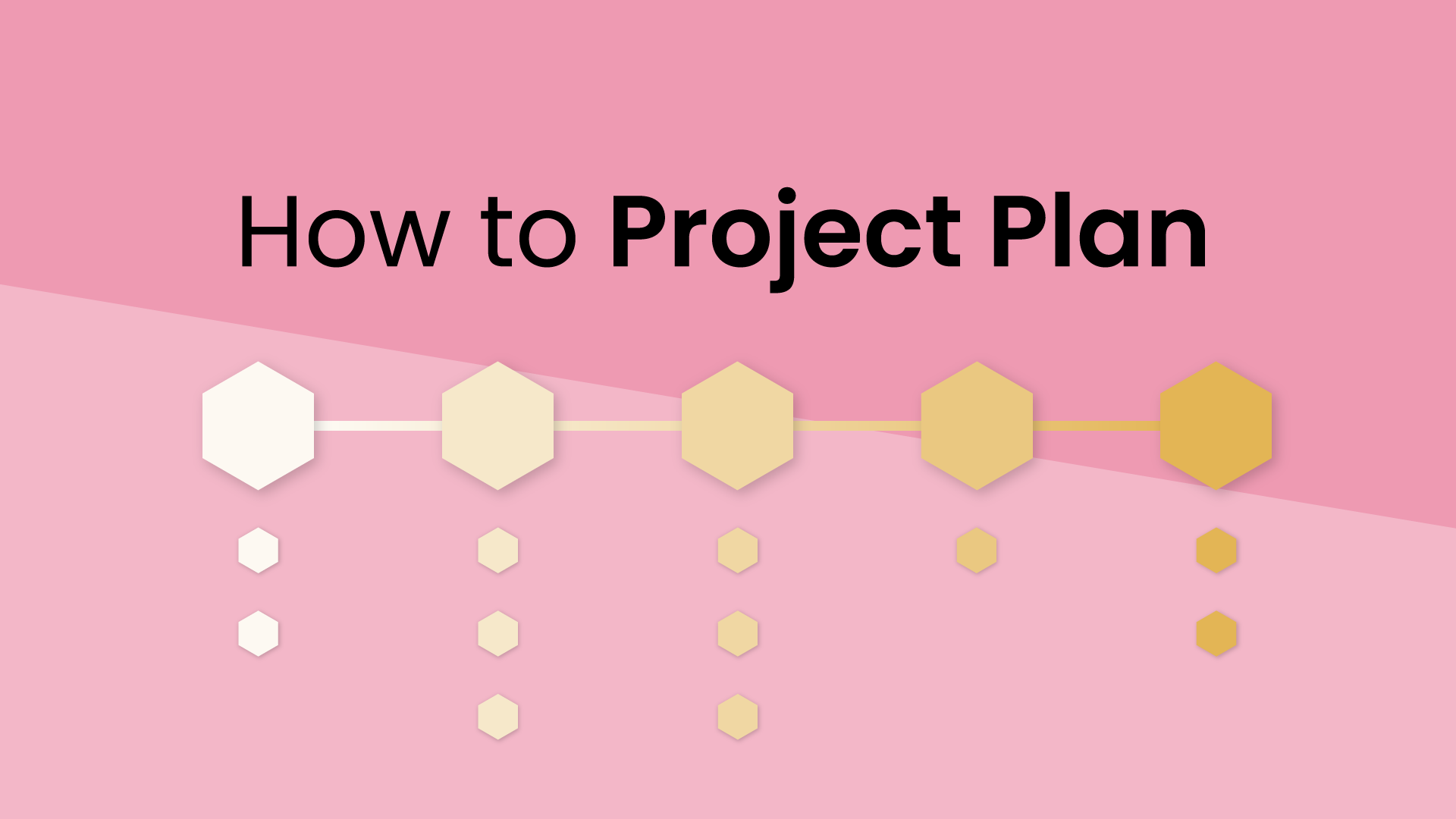

As a modern worker, you split your attention across different tasks all day long — answering emails, checking Slack, reviewing updates, and trying to find time to start that task your boss needs ASAP. This moving from disparate task to task is called context switching. And while switching tasks is necessary, the number of times you shift context may be wrecking your productivity.
So since you can’t avoid context switching altogether, you can reduce its negative impact on your productivity by reducing harmful distractions and prioritizing your most important tasks.
What is context switching?
Context switching is the act of shifting your attention between different tasks, projects, or thought processes, frequently leading to disruptions in focus and workflow. According to the American Psychological Association, switching refers to the change in our “mental control settings" when we move to a new task.
Our ability to switch tasks between multiple processes is remarkable — this cognitive flexibility is how we can easily adapt our behavior to our environment, an essential function of daily life. Context switching is what allows us, for example, to drive 65 mph on a highway before exiting on a local street where we must drive 25.
The term context switching was originally used in computing to describe multitasking operating system switching from one state of a running process to another. Computers struggled when they switched tasks, incurring a context switch cost. Today, we use multitasking and context switching to speak about human behaviors. And this same switching penalty applies to us – our context switching cost may be longer completion times, additional errors, or dips in our productivity.
Top problems with context switching

Do you ever have so much on your plate you keep jumping from one thing to the next to try to get it all done? While it’s hard to focus on one task at a time, especially when we’re slammed, context switching triggers a significant cost on your productivity:
- 97.5% of people cannot multitask effectively.
- The average person is interrupted 31.6 times/day.
- 20% of cognitive capacity is lost when a context switch occurs.
- It takes over 20 minutes to get back on track with a task after being interrupted.
- At least 45% of people are less productive while context switching.
- The average professional attends 25.6 meetings/week, causing them to switch context 5.1 times/day.
Let’s walk through the top 3 context switching costs professionals are facing today.
1. Context switching kills your productivity
Think you can move between tasks without skipping a beat? Think again. It turns out that developers switch tasks 13 times/hour and only spend 6 minutes on a task before switching to the next – and interruptions from coworkers are the most costly offender.
The problem is, you’re still thinking about your previous task after you switch to the new task – a phenomenon known as attention residue. And the switching penalty you end up paying – impaired focus. Even though you’re working on the new task, it doesn’t get your full attention because you’re still partially focused on your previous work.
2. Remote work increases context switching potential
Now that 16% of companies are fully remote in 2023, and 28% of employees are in a hybrid work model – productivity is often super high, despite the endless queue of interruptions.
Remote workers deal with ambient distractions, like “ringing doorbells, noisy pets, and interrupting children,” which weren’t an issue when they used to work in an office. But, more importantly, remote and hybrid workers also find themselves way more interruptible because their teams have rapid-fire communications over Slack. Employees feel pressured to answer every message immediately to prove they're "working" – and this pressure unfortunately even extends outside their working hours.
Each of these interruptions has the potential to pull you from your work. And if it takes over 20 minutes to get back to a task after being interrupted, you can see how even just a few distractions can really make a dent in your workday.
3. Multitasking – not a good thing
People often wonder if context switching is just another term for multitasking. Well, that's not quite the case. As we mentioned, context switching is when you switch your focus from one task to another. On the other hand, multitasking is when we attempt to handle multiple tasks at once, like writing an email, reviewing a document, and checking Slack all at the same time.
While you may think you’re maximizing your productivity, our brains actually aren't quite designed for multitasking. In fact, only 2.5% of people can multitask effectively. So for the other 97.5% of us, task switching back-and-forth between activities is actually plummeting our productivity by as much as 40%.
So even though context switching may be unavoidable in some scenarios, the same cannot be said of multitasking – which you should avoid altogether.
10 ways to combat context switching
So how do we reduce context switching? You've got to be super intentional about planning and protecting productive time for your tasks while limiting interruptions throughout your workweek.
1. Identify your context switches
What's causing you to switch between tasks and projects throughout the day – emails, ad-hoc meetings, or Slack messages? The first step in combatting context switching is identifying the triggers that cause your focus to shift throughout the day.
Context switches usually fall into two main categories: active and passive. Active switches are those you initiate yourself. That is, switching tasks, juggling multiple things simultaneously, or hopping between apps. It’s the kind of multitasking that we often think is productive but can really throw off our focus. On the other hand, passive switches come from external sources – notifications popping up, messages pinging in Slack, or that unexpected request from a colleague asking for help with something.
Paying attention to both the active things you do that interrupt your flow (like task-switching, app-hopping, and multitasking) and the passive things that interrupt your flow (like Slack pings, emails, or spontaneous requests) will allow you to see what really messes with your productivity. Once you know your triggers, you’re in a much better position to put strategies in place – ones that help manage or even reduce these interruptions. And when you can minimize these distractions, you can keep a stronger hold on your focus and productivity throughout the day.
2. Set your priorities
If you ever find yourself drowning in a sea of tasks, jumping from one "urgent" item to the next, it’s time to get your priorities straight. The problem with juggling a bunch of tasks that all seem equally important is that it only fuels that vicious cycle of context switching.
One strategy that works wonders is the Eisenhower Matrix. This tool helps you figure out which tasks are genuinely both important and urgent. It breaks tasks into four categories: urgent and important, important but not urgent, urgent but not important, and neither urgent nor important. The beauty of this system? It keeps you from treating everything like a five-alarm fire.
By sorting your to-do list this way, you can focus on what really needs your attention at any given moment. This means no more endless task-switching. You’ll be able to prioritize what’s truly necessary while giving yourself permission to delay or delegate the rest. That’s how you start easing the pressure of always feeling like you’re being pulled in every direction, creating a more organized and focused workday.
3. Block time for your tasks
Once you’ve got your priorities in check, the next step is to carve out time for focused work. In other words, you should start time blocking. Rather than letting tasks pile up or getting distracted by constant interruptions, you set aside dedicated blocks of time for your most important work.
Time blocking involves creating specific windows in your day where you focus on one task or project without distraction. It’s like giving yourself permission to say, “This is my time to work on this, and nothing else is going to interrupt.” When you schedule your tasks into these blocks, you’re setting clear boundaries – both for yourself and others.
What’s even better? By planning ahead, you protect these time slots from being hijacked by last-minute meetings or surprise requests. You’re sending a clear message: uninterrupted time is necessary for real progress.
4. Set aside time to check Slack & email
We’ve all been there – bouncing between email, Slack, and our actual work, trying to keep everything afloat. It feels like productivity (we're doing a lot, after all), but in reality, it’s just a constant disruption to your focus. So, what’s the solution? Set aside dedicated chunks of time throughout the day – say, 15-minute slots in the morning, at midday, and in the afternoon – specifically for checking emails and Slack messages.
Schedule your check-ins at specific times. This way, you won't feel obligated to answer every notification immediately. You'll be able to think more clearly and stay focused on your important tasks, while still responding to messages calmly and deliberately. The trick is to create a buffer between your deep work and communication channels, giving yourself a sense of peace and clarity. Knowing you’ve set specific times to check messages will help you resist the temptation to check constantly, which can really eat into your productivity.
5. Set DND in Slack
Slack is a great tool for communication, but let’s be honest – it can quickly derail your productivity when you’re constantly getting interrupted by messages. One of the easiest ways to protect your focus is by setting your status to “Do Not Disturb” (DND). Even better, you can sync your Slack status with your calendar, so your coworkers automatically know when you’re in a meeting, deep in a task, or handling something personal.
When you use DND, you get rid of those constant pings and the mental energy it takes to decide whether or not to respond. Also, you can customize your DND settings for specific events. For example, let’s say you’re in a focused work session – you can set DND for a specific block of time, giving you a distraction-free period.
6. Batch similar tasks together
If you have a ton of tasks to do for the same project, try task batching them together to complete in a single working session. This will help you stay focused on the single project, work through task dependencies, and prevent context switching while you work.
Task batching is like cooking a full meal instead of nibbling throughout the day. Instead of constantly jumping from one unrelated task to another, batch similar tasks together into focused work sessions. If you’re working on a project, group all the related tasks and knock them out in one go.
For example, if you’re writing a report, instead of bouncing between writing, editing, and gathering data, tackle each task in a dedicated block of time. This keeps you in the same mindset and helps with task dependencies – like editing the draft right after finishing the first section.
When tasks are linked, your brain doesn’t have to keep switching gears, which helps you stay focused on one goal at a time. You reduce the mental strain that comes from context-switching and, as a bonus, you’ll build momentum. It feels really good to check off a whole bunch of tasks at the same time, doesn't it?
7. Try day theming
When you’re juggling multiple large projects, it’s easy to fall into the trap of switching back and forth between them all day. One effective way to cut down on this constant context switching is day theming. This simply means dedicating specific days or time blocks to certain projects or tasks.
For example, you could make Mondays your “Marketing Day,” Tuesdays for client meetings, Wednesdays for product development, and so on. By structuring your workweek around themes, you avoid the temptation to jump between unrelated tasks. Day theming lets you immerse yourself fully in one project at a time, helping you stay focused and feel more purposeful.
And day theming isn't just about today, it's a game-changer for the long haul too! Instead of scrambling to get things done at the last minute, you can start your week with a clear plan. Your brain knows what to expect. So, when it's 'Marketing Monday', you're already in the marketing mindset, ready to go. And by dedicating a whole day to one theme, you can really focus and give each project the attention it deserves, without constantly switching gears.
8. Schedule breaks into your workday
Don't just take random breaks whenever – that can really mess with your focus. It's way better to plan short, intentional breaks between your work sessions or after meetings.
When you block off specific time for breaks, you can take care of things like grabbing a coffee, stretching your legs, or answering a quick personal call without disrupting your flow. For example, you could schedule a five-minute break every 60-90 minutes of focused work, or take a longer break after an intense meeting or task session.
This method helps you avoid those unplanned distractions when the urge to step away hits. That and it minimizes the impact of interruptions. Knowing you’ve set aside time for a break means you can stay locked into your tasks, trusting you’ll get the mental rest you need — at the right time.
9. Integrations
If you’re constantly jumping between apps to gather the information you need, you’re opening the door to plenty of context switching. Every time you leave one tool and jump into another, you risk losing focus and wasting valuable time.
To cut down on this, try integrating your most used apps and tools so your workflow becomes smoother. For instance, by integrating your email and calendar with task management tools like Asana or Linear, you can view updates, schedule tasks, and receive notifications all in one place. Likewise, syncing Slack with project management tools helps you stay on top of project progress without having to bounce between different applications.
These integrations don’t just save time; they also help you stay focused by consolidating everything you need into one platform. With less friction from switching apps, you can stay more engaged with your tasks, make quicker decisions, and keep your productivity flowing.
10. No-meeting days
It’s tough to make real progress on your tasks when you’re constantly shifting gears to prepare for meetings. While meetings are often necessary, they can break your concentration and push you into a cycle of context switching that disrupts your entire workday.
A great way to minimize this disruption is by setting aside "no-meeting days" for yourself or your team. In doing so, you carve out uninterrupted time to tackle your most important tasks, without the constant back-and-forth of preparing for the next meeting.
On these no-meeting days, you can really maximize your focus time with tasks like writing reports, solving complex problems, or brainstorming new ideas. This way, you can tackle work that might get pushed aside due to meeting overload.
Get your distractions under control
Even though you’re juggling numerous tasks at work, context switching isn’t the way to dominate your task list. While it’s not totally unavoidable, it can negatively affect your productivity by disrupting your focus and increasing your stress. But by prioritizing your most important work, blocking time for tasks, and limiting interruptions, you can significantly cut the costs of context-switching.
Did we miss anything? How do you manage context switching throughout your week? Tweet us @reclaimai to let us know!
Productivity Trends Reports
Ready for an
AI calendar?
Auto-schedule focus time, meetings, & breaks on Google Calendar + Outlook Calendar.
Start scheduling →It's free! 🎉































